You know what’s crazy? I used to hate learning German. I’d sit there conjugating verbs for hours, feeling like my brain was turning to mush. Then my teacher handed me a simple fairy tale, and everything clicked. Turns out, I wasn’t alone – over 15 million people worldwide are ditching boring textbooks for German stories, according to data from German with Stories, and honestly? It’s the best decision you’ll make.
Reading german stories transforms your learning from memorizing endless grammar rules to actually understanding how real Germans think and talk. I’ve spent years handpicking these 25 stories that’ll take you from “Guten Tag” to actually getting German humor (trust me, it exists).
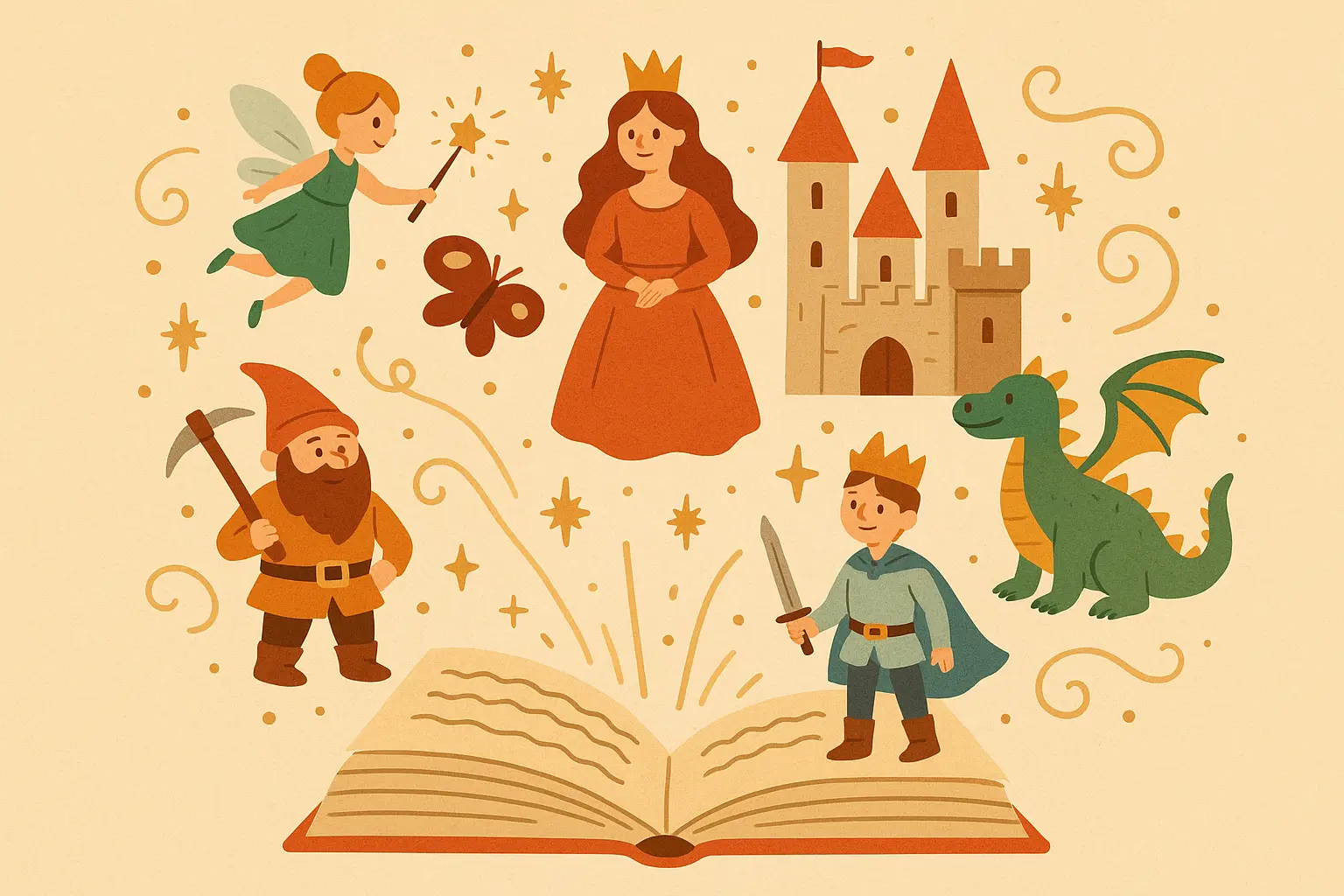
Table of Contents
-
Key Considerations When Selecting German Stories
-
25 Essential German Stories Across 6 Categories
-
Stories That Won’t Make You Want to Quit (Perfect for Beginners)
-
Intermediate German Short Stories
-
Contemporary German Literature
-
Historical and Cultural German Texts
-
Austrian and Swiss German Literature
-
Modern German Short Story Collections
-
-
What Each Story Category Actually Means for You
-
How to Match Stories to Your Learning Goals
-
How Nairrate Can Enhance Your German Storytelling Journey
-
Final Thoughts
TL;DR
-
Don’t be a hero – pick stories that match your actual level, not where you think you should be
-
Cultural stuff matters more than you think – some stories need background knowledge to make sense
-
Audio versions are gold for pronunciation (when you can find them)
-
Start with kids’ books and don’t feel weird about it – everyone does it
-
Intermediate stories are where things get interesting (and harder)
-
Advanced literature requires serious commitment and probably some history lessons
-
Contemporary stories help you understand modern Germans (spoiler: they’re still processing a lot)
-
Austrian and Swiss writers add their own flavor to the mix
-
Short stories are your friend – quick wins keep you motivated
-
Match your story choice to what you actually want to achieve
Key Considerations When Selecting German Stories
Here’s the thing – your current German level isn’t just important, it’s everything. Simple german stories work best when you’re starting out because they use everyday words, straightforward sentences, and don’t throw curveballs at you every paragraph. I’ve watched too many eager learners burn out trying to tackle Kafka on week two. Don’t be that person.
Here’s the honest truth about where you probably fit:
Just Starting Out? Stick to stories with everyday words and simple sentences. Think “The cat sat on the mat” level, not “The feline positioned itself upon the textile surface.”
Getting Somewhere? You can handle some past tense and maybe a few “what if” scenarios. You’re not fluent, but you’re not completely lost either.
Pretty Confident? Bring on the weird stuff. You can probably figure out what’s happening even when German authors get all philosophical and wordy.
|
Where You’re At |
Words You Know |
Grammar You Can Handle |
Story Length That Won’t Kill You |
|---|---|---|---|
|
Just Starting (A1-A2) |
500-1,000 words |
Present tense, basic stuff |
500-1,500 words |
|
Getting There (B1-B2) |
2,000-4,000 words |
Past tense, some fancy grammar |
2,000-5,000 words |
|
Pretty Good (C1-C2) |
5,000+ words |
All the complicated stuff |
5,000+ words |
Vocabulary complexity will make or break your reading experience. German short stories for beginners should feel like a conversation with a patient friend, not a wrestling match with a dictionary. When selecting appropriate materials, understanding different story theme examples can help you find german stories that actually interest you.
Take “Die kleine Raupe Nimmersatt” (The Very Hungry Caterpillar). It uses repetitive patterns like “Am Montag fraß sie sich durch einen Apfel” (On Monday, she ate through one apple). See how it teaches days, numbers, and food words without making your brain hurt? That’s the sweet spot.
Cultural context is trickier than most people realize. German stories are packed with cultural references, historical nods, and social situations that might fly right over your head. Some stories you can enjoy without knowing much background, others require a mini history lesson first.
Story length affects whether you’ll actually finish what you start. German short stories give you that “I did it!” feeling faster, while longer texts offer deeper immersion but can feel overwhelming when you’re still building confidence.
Your learning goals should drive your story choices. Are you reading to learn german with stories, understand culture, or just have fun? Different goals need different approaches. Clear objectives help you pick the right difficulty level and avoid frustration.
Audio versions are absolute gold when you can find them. They help with pronunciation, rhythm, and listening skills. Stories with accompanying audio are like having a German friend read to you – invaluable for language learners.
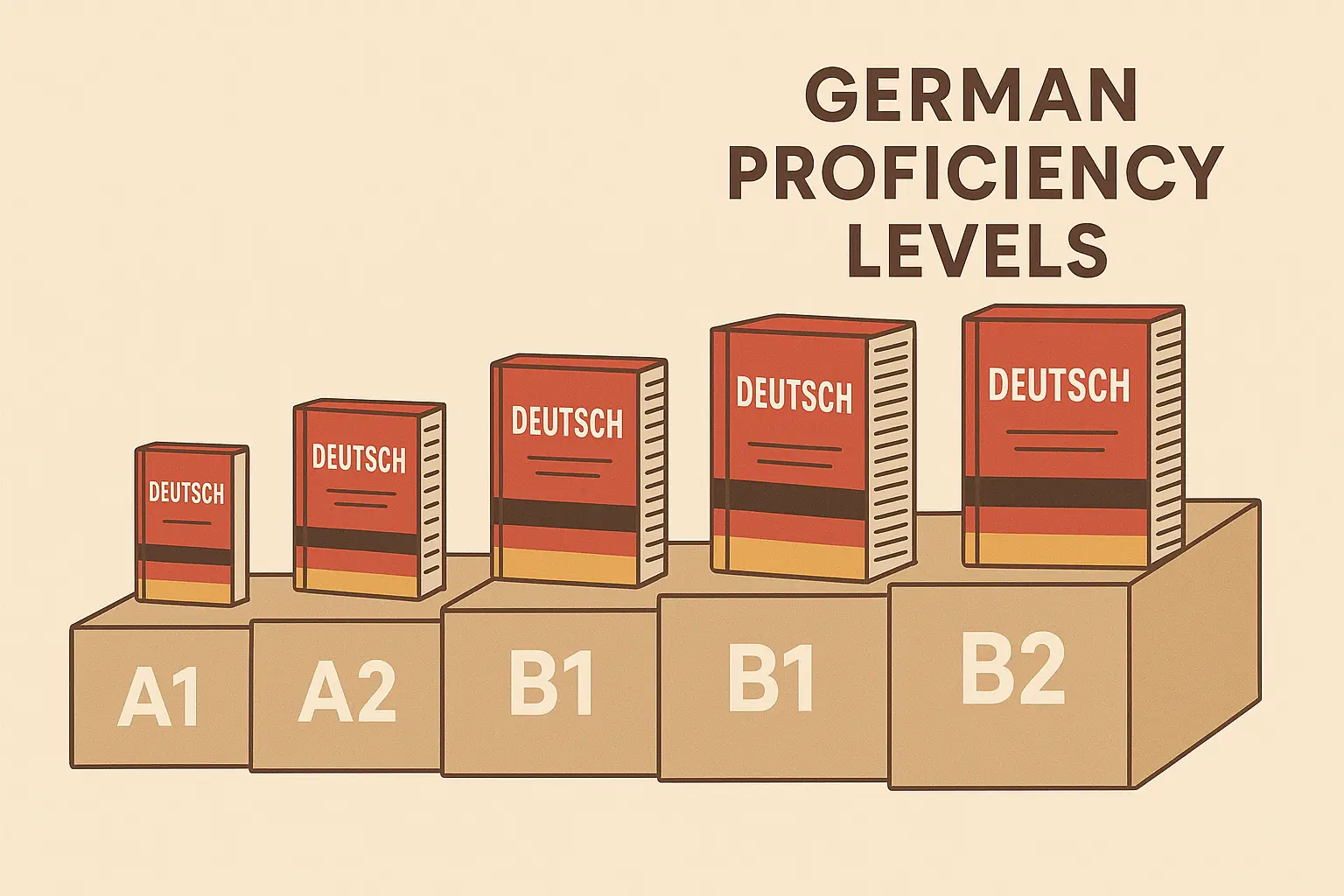
25 Essential German Stories Across 6 Categories
I’ve organized these 25 german stories into six categories that actually make sense for real learners. From simple tales that won’t intimidate you to complex masterpieces that’ll make you feel accomplished, this collection covers the full spectrum of German storytelling. Each category builds on the last one, creating a natural path forward.
Stories That Won’t Make You Want to Quit (Perfect for Beginners)
These five stories are your training wheels. Simple vocabulary, familiar patterns, and themes you probably already know. They’re designed to build your confidence while sneaking in essential language patterns. Don’t skip these just because they seem “too easy” – everyone starts here.
1. “Die kleine Raupe Nimmersatt” (The Very Hungry Caterpillar)
Yeah, it’s a kids’ book. So what? This little guy teaches you food words, days of the week, and numbers without making you feel like you’re studying. Plus, who doesn’t love a story about eating your way through everything?
The simple sentence structure follows predictable patterns that make sense immediately. It’s repetitive in the best possible way – you’ll remember these phrases long after you close the book.
2. “Der Hase und der Igel” (The Hare and the Hedgehog)
Animal stories are perfect when you’re starting out. This one teaches you how to compare things in German while telling a classic underdog story.
You’ll see sentences like “Der Hase läuft schnell. Der Igel läuft langsam” (The hare runs fast. The hedgehog runs slowly). Simple, clear, and actually useful in real conversations.
3. “Max und Moritz” by Wilhelm Busch
Think of these two as the German Calvin and Hobbes, except with more property damage and fewer philosophical insights about life. The rhyming helps with pronunciation, and the pictures support comprehension when words get tricky.
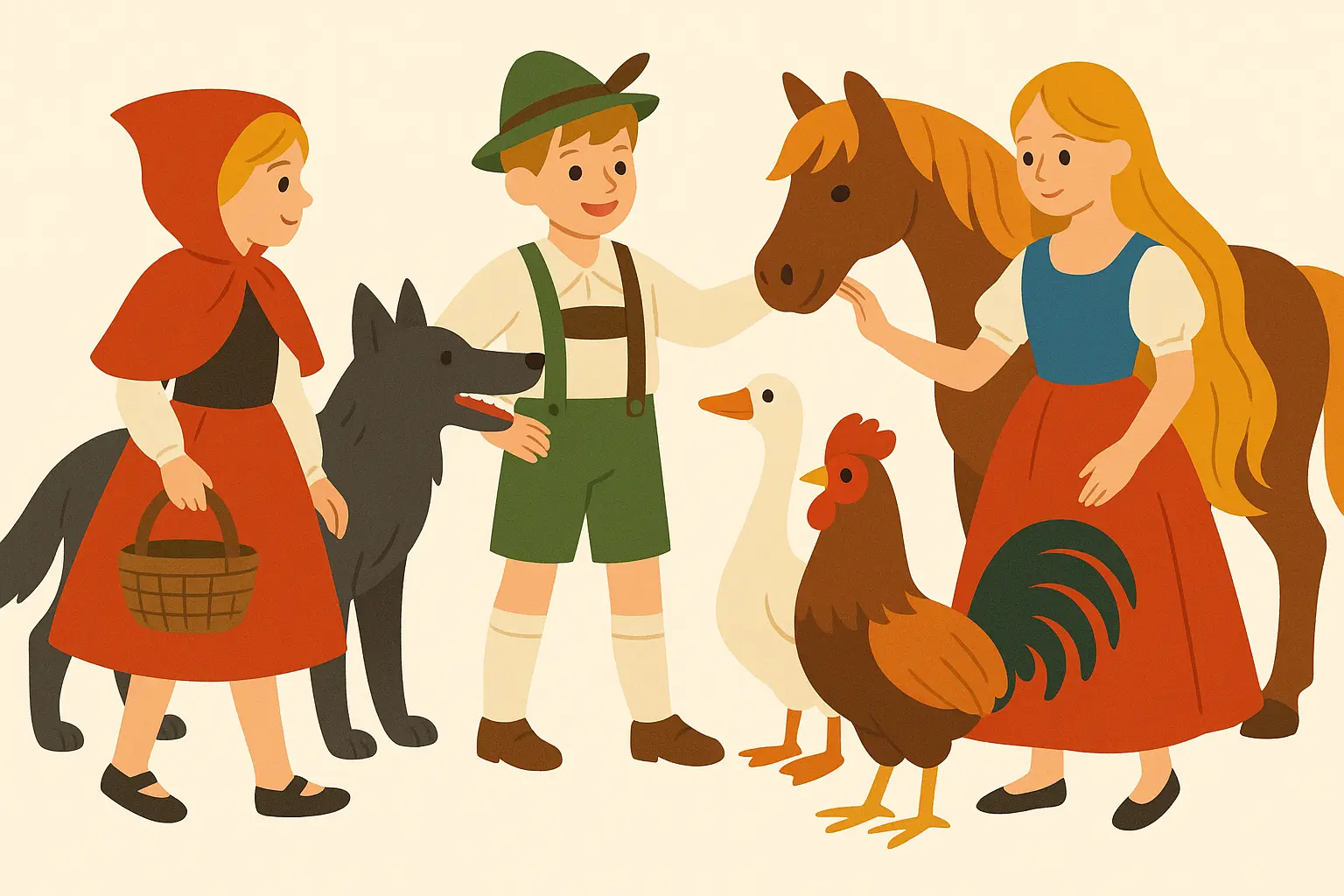
4. “Die Bremer Stadtmusikanten” (The Bremen Town Musicians)
This one’s dialogue-heavy, which is perfect for conversation practice. You’ll learn practical phrases like “Ich bin alt und kann nicht mehr arbeiten” (I am old and can no longer work) – useful vocabulary that shows up in real life.
These traditional tales share similarities with folktale story examples found everywhere, making them comfortable territory for new German learners.
5. “Rotkäppchen” (Little Red Riding Hood)
You already know this story, which means you can focus on the German instead of trying to figure out what’s happening. It introduces color words, family vocabulary, and basic dialogue patterns without the stress of an unfamiliar plot.
Intermediate German Short Stories
Now we’re getting somewhere. These five stories bridge the gap between simple tales and serious literature. They’ll challenge you with psychological depth, cultural concepts, and more complex grammar, but they won’t leave you completely lost.
German short stories at this level require some cultural knowledge but reward you with real insights into how Germans think. Fair warning: this is where things start getting weird.
6. “Die Verwandlung” by Franz Kafka (excerpts)
Fair warning: this one’s weird. Guy wakes up as a giant bug. But if you can handle the weirdness, your German will level up fast. Just maybe don’t read it right before bed.
Kafka uses complex sentences like “Als Gregor Samsa eines Morgens aus unruhigen Träumen erwachte, fand er sich in seinem Bett zu einem ungeheueren Ungeziefer verwandelt” (When Gregor Samsa woke up one morning from uneasy dreams, he found himself transformed in his bed into a gigantic insect). That’s advanced vocabulary and sentence structure right there.
7. “Der Sandmann” by E.T.A. Hoffmann
Gothic romance meets psychological thriller. This story messes with your head while teaching you sophisticated vocabulary about psychology, optics, and supernatural stuff. It’s like a German episode of The Twilight Zone.
8. “Bahnwärter Thiel” by Gerhart Hauptmann
Working-class tragedy with some regional dialect thrown in. This one gives you insight into industrial-era Germany while challenging you with naturalistic writing style and social themes.
9. “Der Schimmelreiter” by Theodor Storm
A story within a story about a guy fighting nature and superstition. North German dialect, technical vocabulary about building dikes, and folklore elements make this a rich cultural experience.
10. “Tonio Kröger” by Thomas Mann
Semi-autobiographical story about being an artist in bourgeois society. Mann’s sophisticated prose style will challenge you while giving insight into early 20th-century German intellectual culture.
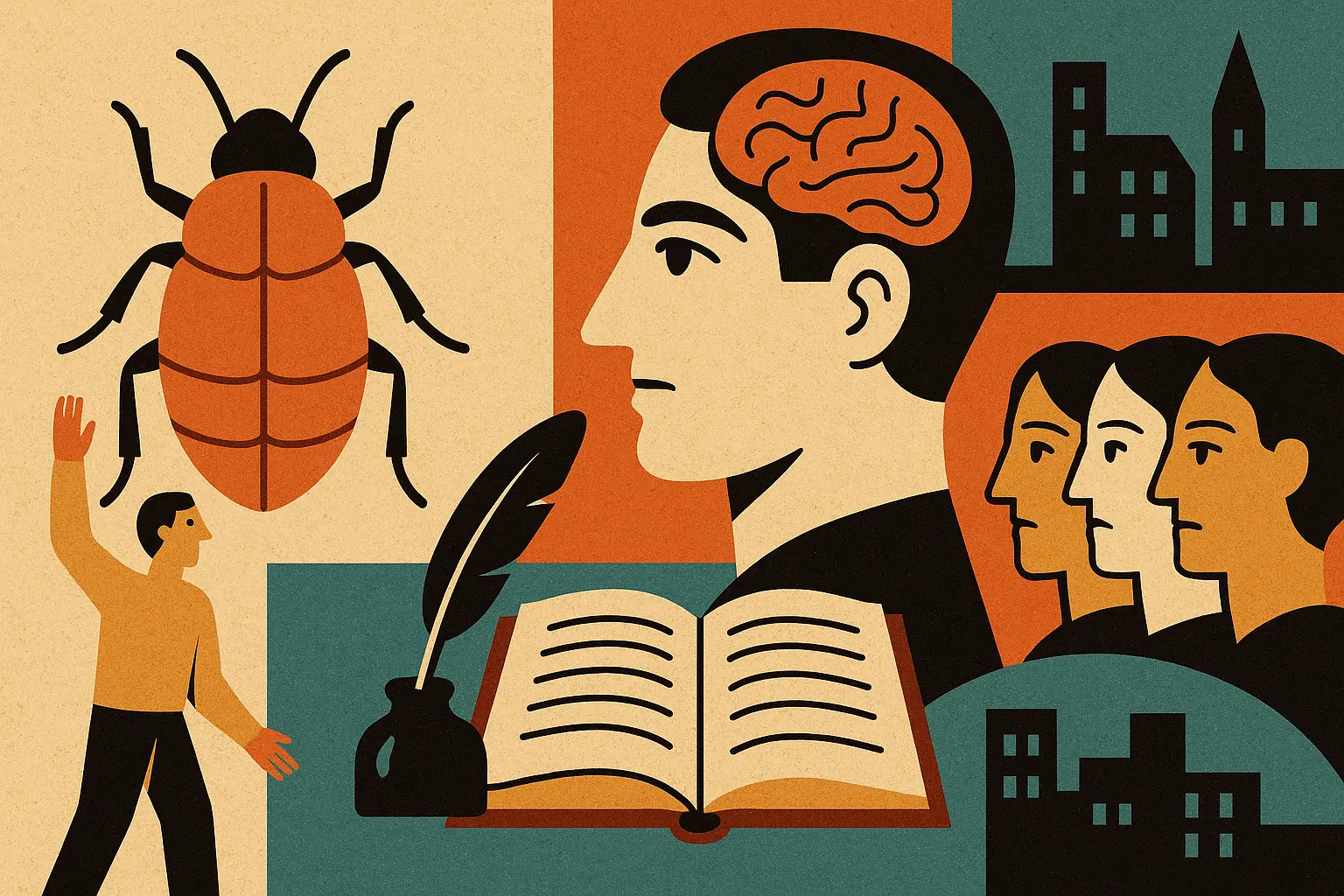
Contemporary German Literature
These five works tackle modern German society, historical baggage, and current cultural debates. They feature contemporary language and current social issues that help you understand how Germans see themselves today.
Reading contemporary german stories helps you understand current German perspectives on everything from technology to relationships to their complicated history.
11. “Der Vorleser” by Bernhard Schlink (excerpts)
Post-war German literature dealing with Holocaust guilt and memory. Heavy stuff, but essential for understanding modern German consciousness. Legal terminology and historical references require some background knowledge.
12. “Faserland” by Christian Kracht
Pop literature about wealthy German youth in the 1990s. Contemporary slang, brand references, and social criticism give you insight into post-reunification German society and generational attitudes.
13. “Effi Briest” by Theodor Fontane (selected chapters)
Social realism examining women’s roles in 19th-century Prussian society. Formal dialogue and social conventions vocabulary provide historical context while demonstrating classical German prose.
14. “Der Steppenwolf” by Hermann Hesse (excerpts)
Philosophical novel about human duality. Existential themes, psychological terminology, and symbolic imagery represent German intellectual literature’s engagement with Eastern philosophy.
15. “Homo Faber” by Max Frisch (selected passages)
Swiss-German novel about technology’s impact on human relationships. Technical vocabulary and philosophical reflections address mid-20th-century concerns about progress and human connection.
|
Story Type |
Key Themes |
Vocabulary Focus |
Background Knowledge Needed |
|---|---|---|---|
|
Contemporary |
Modern society, identity, tech |
Current German, slang, technical terms |
Post-war Germany, reunification |
|
Historical |
Philosophy, social criticism, tradition |
Literary German, formal language |
German intellectual history |
|
Regional |
Local culture, dialect, customs |
Regional variations, formal/informal |
Austrian/Swiss culture |
Historical and Cultural German Texts
Let’s be real about the historical stuff – these aren’t beach reads. These four masterpieces represent pivotal moments in German literary and cultural development. You’ll need to know some German history, and yeah, some of it’s pretty heavy. But if you’re ready for the challenge, these stories will give you serious bragging rights.
16. “Die Leiden des jungen Werthers” by Goethe (excerpts)
The book that launched the Romantic movement and made Goethe famous across Europe. Emotional intensity, nature imagery, and 18th-century German language patterns provide historical linguistic insight.
17. “Der Zauberberg” by Thomas Mann (selected sections)
Set in a Swiss sanatorium before WWI, this explores disease, time, and European intellectual culture. Medical terminology and philosophical discussions create a complex reading experience.

18. “Berlin Alexanderplatz” by Alfred Döblin (excerpts)
Modernist urban novel using stream-of-consciousness technique. Berlin dialect and 1920s slang depict working-class life in Weimar Republic through experimental narrative structure.
19. “Die Blechtrommel” by Günter Grass (selected chapters)
Magical realist novel chronicling 20th-century German history through a child narrator. Danzig dialect and historical references address the Nazi period and post-war German identity.
Austrian and Swiss German Literature
Austrian and Swiss German? It’s like discovering your favorite song has a remix you never knew about. Same language, different flavor. Warning: you might catch yourself trying to sound fancy after reading Stefan Zweig.
These three works showcase the rich literary traditions beyond Germany’s borders, demonstrating how different cultural contexts shape German literary expression.
20. “Brief eines Unbekannten” by Stefan Zweig
Psychological novella about obsessive love and memory. Viennese cultural atmosphere and elegant prose style characteristic of Austrian literature provide insight into Habsburg cultural legacy.
21. “Andorra” by Max Frisch
Swiss play examining prejudice and identity formation. Dramatic dialogue and allegorical elements addressing antisemitism provide powerful social psychology commentary.
22. “Die Klavierspielerin” by Elfriede Jelinek (excerpts)
Austrian feminist literature exploring repression and violence. Experimental language and psychological complexity address controversial themes through contemporary Austrian literary innovation.

Modern German Short Story Collections
Modern German writers aren’t messing around. They tackle everything from post-war guilt to dating in the digital age. It’s like therapy, but in German, and with better plot twists.
These three contemporary collections represent current trends in German short fiction, showcasing how German writers continue to evolve their craft.
23. “Erzählungen” by Heinrich Böll
Post-war short stories addressing German guilt and reconstruction. Working-class perspectives and Catholic themes demonstrate social realism while providing insight into post-war German society’s struggle with historical responsibility.
These collections demonstrate how effective short story examples can address complex social and moral themes within concise narrative structures.
24. “Kalte Küsse” by Julia Franck
Contemporary German short stories exploring relationships and identity. Modern urban settings and psychological realism provide feminist perspectives on contemporary German society.
25. “Der Fremde” by Albert Camus (German translation)
Existentialist novel examining absurdity and alienation. Though originally French, it’s widely studied in German translation and provides philosophical vocabulary and cross-cultural literary perspective.
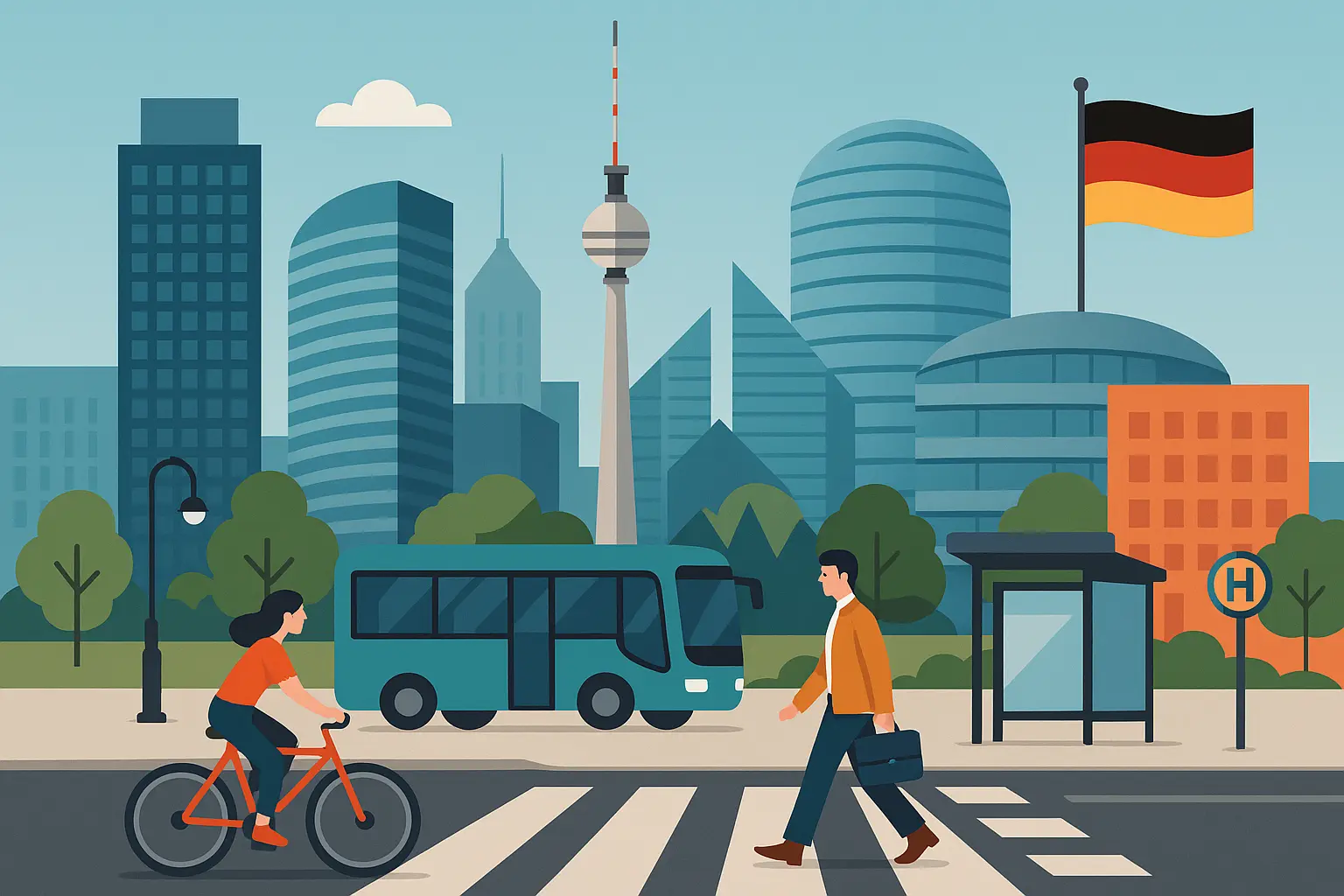
What Each Story Category Actually Means for You
Here’s what I wish someone had told me when I started: Don’t try to be a hero. That difficulty progression isn’t just for show. I spent three months getting nowhere with advanced stuff when I should’ve been building my confidence with easier stories. Learn from my mistakes.
Each category serves specific purposes and proficiency levels. Beginner stories prioritize vocabulary building and simple structures, intermediate works introduce complex themes and grammar, while advanced selections require extensive cultural knowledge and sophisticated language skills.
Understanding these distinctions helps you choose appropriate reading materials. Simple german stories excel in systematic language building through repetitive structures and familiar themes. “Die kleine Raupe Nimmersatt” provides vocabulary building with food items, numbers, and days of the week while maintaining simple sentence structures.
“Der Hase und der Igel” introduces comparative adjectives and basic animal vocabulary through moral lesson structure that provides cultural insight into German storytelling traditions. These german short stories for beginners create solid foundations for more advanced reading.
|
Category |
How Hard Is It Really? |
Cultural Knowledge Required |
Audio Availability |
Best For |
|---|---|---|---|---|
|
Beginner Stories |
Pretty easy (2/10) |
Not much |
Usually available (90%) |
Building confidence, basic vocab |
|
Intermediate Stories |
Getting challenging (6/10) |
Some needed |
Hit or miss (60%) |
Grammar practice, cultural insight |
|
Contemporary Literature |
Definitely hard (7/10) |
A lot |
Rarely available (30%) |
Understanding modern Germany |
|
Historical Texts |
Really hard (9/10) |
Tons |
Almost never (20%) |
Literary appreciation, deep culture |
|
Regional Literature |
Hard (8/10) |
A lot |
Sometimes (40%) |
Linguistic diversity, cultural breadth |
|
Modern Collections |
Hard (7/10) |
Quite a bit |
Sometimes (50%) |
Current trends, contemporary themes |
Intermediate stories challenge readers with complex psychological vocabulary and sophisticated themes. “Die Verwandlung” requires understanding of subjunctive constructions and absurdist elements while providing exposure to sophisticated German prose. “Der Sandmann” combines supernatural vocabulary with psychological terminology, offering insight into German Romantic literature while developing advanced reading skills.
A practical progression might look like this: Start with “Rotkäppchen” to master basic past tense and dialogue structures, then advance to “Der Sandmann” for complex psychological vocabulary, and finally tackle “Der Vorleser” for sophisticated historical and legal terminology. This sequence builds systematically from simple german narrative structures to complex literary analysis.
Contemporary literature addresses historical consciousness and modern social issues through complex narrative techniques. “Der Vorleser” requires understanding of legal and historical terminology while exploring complex moral themes related to post-war German identity.
“Faserland” provides contemporary German slang and cultural references, offering insight into modern German youth culture and social criticism. These works demand cultural awareness but reward readers with deep understanding of modern German society.
Historical texts demand extensive cultural knowledge while providing unparalleled insight into German intellectual development. Stories require understanding of historical contexts, literary movements, and cultural references that shaped German identity. These works reward readers with deep cultural understanding and appreciation for German literary achievement.
Regional literature showcases linguistic variations and cultural perspectives beyond Germany proper. Austrian works emphasize psychological depth and Habsburg cultural legacy, while Swiss literature focuses on social criticism and moral questioning. These selections broaden understanding of German-language literary diversity and cultural expression.
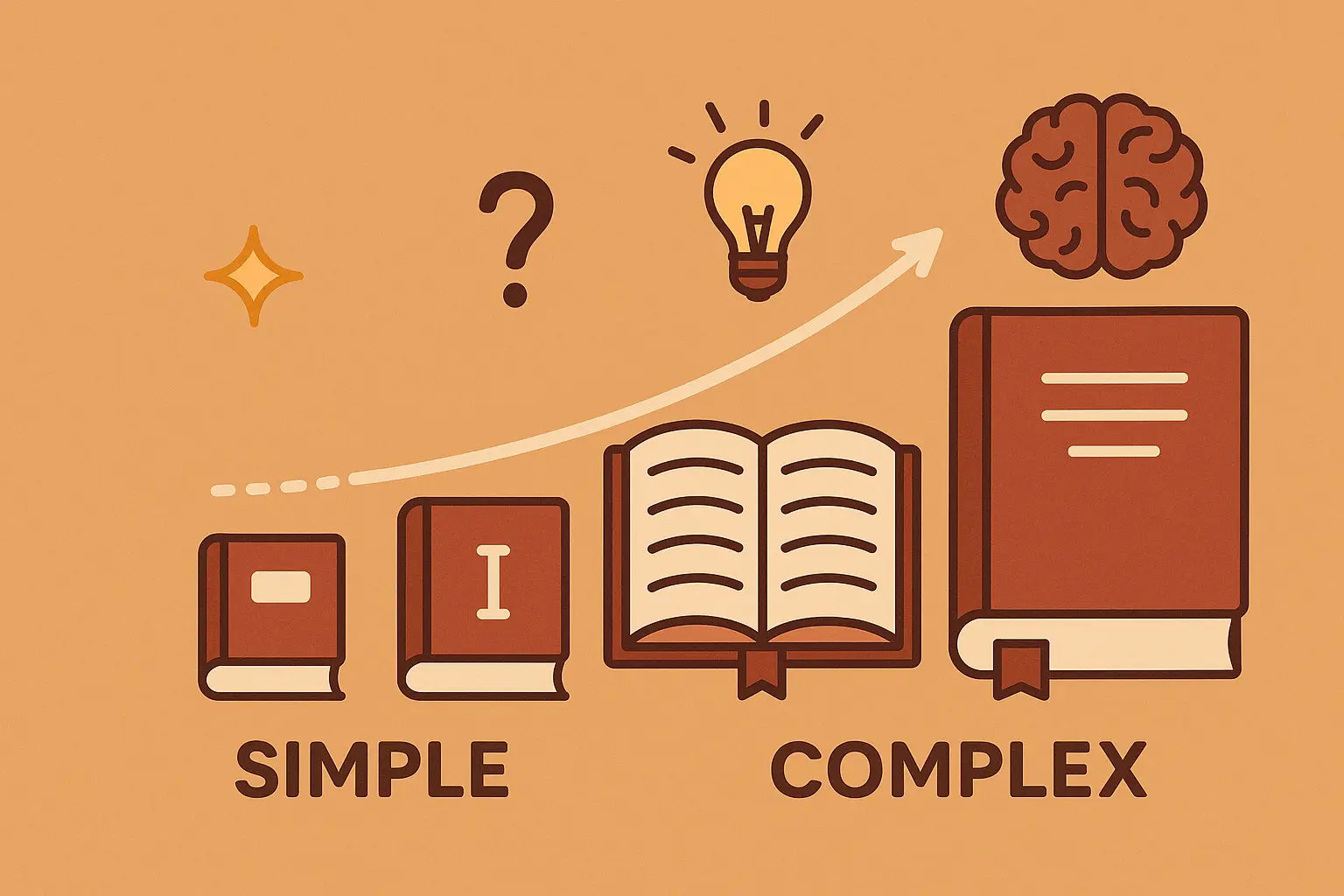
Modern collections demonstrate contemporary German literary trends and social concerns. They address current issues through innovative narrative techniques while maintaining connection to German literary traditions. These works provide insight into how German writers continue to evolve their craft and address contemporary challenges.
How to Match Stories to Your Learning Goals
Matching stories to your specific learning needs requires honest assessment of your language proficiency, cultural background, and what you actually want to achieve. Beginner stories score highest for accessibility but lowest for cultural complexity, while advanced works require significant language proficiency but offer the greatest literary value.
Understanding these trade-offs helps you make informed selections that support your learning goals. German short stories at different levels serve distinct purposes in your language development journey.
Language proficiency matching determines reading success and enjoyment levels. Beginner stories feature vocabulary under 1,000 words, present tense predominance, and simple sentence structures that score highest for accessibility. Intermediate stories introduce past tense variations, subjunctive mood, and expanded vocabulary ranging from 2,000-4,000 words, balancing accessibility with literary sophistication.
Advanced stories require vocabulary exceeding 5,000 words, complex grammatical structures, and extensive cultural knowledge. They score highest for literary value but demand significant language proficiency for comprehension. This progression allows systematic skill development while maintaining appropriate challenge levels.
Cultural context requirements vary dramatically across categories and individual works. Stories like “Der Vorleser” and “Die Blechtrommel” demand extensive historical knowledge about Nazi Germany and post-war reconstruction. “Faserland” requires familiarity with 1990s German pop culture, while classical works need understanding of historical literary movements and cultural contexts.
Learning objective alignment determines which stories best serve your specific goals. Language learning focus benefits from beginner stories that provide systematic vocabulary building and grammatical progression. Cultural understanding develops through historical texts that offer deep cultural insights into German society and intellectual development.
Literary appreciation grows through contemporary and classical works that develop aesthetic appreciation and critical thinking skills. Each story in german serves different educational purposes depending on your primary objectives.

Practical accessibility affects your ability to engage with selected materials effectively. Stories with audio versions score highest for language learning value, particularly beginner texts that support pronunciation and listening skill development. Annotated editions provide essential vocabulary support for intermediate and advanced works.
Digital availability affects accessibility for international learners who may lack access to physical German bookstores. Consider these practical factors when building your German reading library.
Pro tip from someone who learned the hard way: Don’t look up every single word you don’t know. I used to spend more time in my dictionary than actually reading. Pick up what you can from context, and only look up words that show up multiple times.
Assessment criteria help you evaluate story difficulty and appropriateness for your current level. Vocabulary density, sentence complexity, cultural reference frequency, and thematic sophistication all contribute to overall difficulty ratings. Use these factors to select stories that challenge you appropriately without causing frustration or comprehension breakdown.
Progressive difficulty sequencing allows systematic skill development over time. Start with beginner-friendly tales, gradually progress through intermediate works, then tackle advanced literature as your skills develop. This approach builds confidence while ensuring steady progress toward more sophisticated German literary appreciation.
How Nairrate Can Enhance Your German Storytelling Journey
Want to try writing your own German stories? I get it – reading is great, but creating your own stuff really makes things stick. There are AI tools out there that can help you get started without staring at a blank page for hours.
Nairrate’s Story Starters Generator proves invaluable for German language learners seeking to craft original simple german stories. The AI understands narrative flow and generates compelling opening lines that work within German cultural contexts, helping you move beyond passive reading toward active creation.
Whether you’re inspired by traditional fairy tales or contemporary themes, Nairrate’s story starters generator can help you begin crafting original German narratives that complement your reading journey.
Overcoming creative blocks becomes easier with AI-powered assistance that provides fresh perspectives and alternative approaches to storytelling challenges. Whether you’re crafting basic narratives for practice or developing more sophisticated German short stories, Nairrate adapts to your creative needs and proficiency level.
The platform’s genre diversity mirrors the range found in German literature itself. You can experiment with fairy tale structures, psychological narratives, or contemporary social commentary while building your German writing skills.
Building confidence through creative writing complements traditional language learning methods. Nairrate enables experimentation with German narrative techniques while providing supportive creative partnership. The tool serves as your creative companion in mastering German through storytelling, bridging the gap between consuming German literature and creating original works.
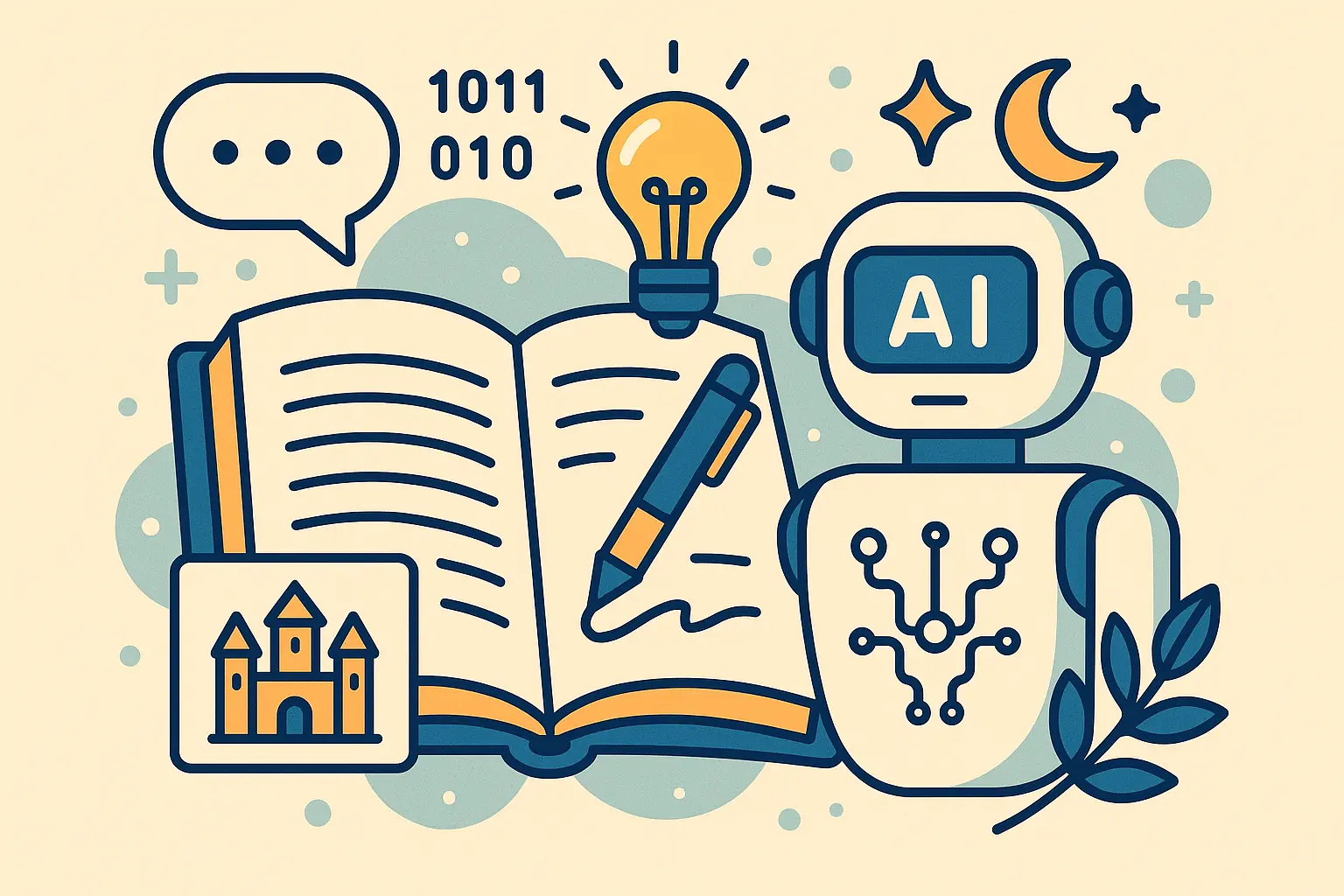
Ready to begin your German storytelling adventure? Start with the beginner stories listed above, then use Nairrate’s comprehensive story generation tools to create your own German narratives, building from simple structures to complex literary expressions that honor the rich tradition of German storytelling.
Final Thoughts
Look, I’m not going to lie to you – learning German through stories isn’t always easy. Some days you’ll feel like a genius, other days you’ll wonder if your brain is broken. Both feelings are completely normal.
The secret sauce? Start where you are, not where you think you should be. Read stuff you actually enjoy, even if it’s “below your level.” Celebrate the small wins. And remember – every time you understand a joke in German or catch a cultural reference, you’re not just learning a language. You’re joining a conversation that’s been going on for centuries.
Remember that language learning through stories requires patience and persistence. Start with materials appropriate to your current level, gradually building complexity as your skills develop. Don’t rush through advanced works before mastering foundational elements – each category builds upon previous knowledge and skills.
The beauty of German storytelling lies in its diversity and depth. From simple fairy tales that teach basic vocabulary to complex literary masterpieces that explore profound philosophical questions, German literature offers something valuable for every learner. Your personal journey through these stories will be unique, shaped by your interests, goals, and cultural background.
German short stories for beginners provide the perfect starting point, while advanced works reward dedicated readers with profound cultural insights. Each story you complete brings you closer to true German fluency and cultural understanding.
We’ve all been there – you’re reading along, feeling pretty good about yourself, then BAM! A sentence that’s basically a paragraph long with words you’ve never seen before. Don’t panic. It happens to everyone.
Most importantly, enjoy the process. Language learning through stories should bring joy and discovery, rather than frustration and overwhelm. Choose stories that resonate with your interests, take time to appreciate cultural nuances, and celebrate your progress as you advance through increasingly sophisticated works.
So here’s my advice: Pick one story from the beginner list (seriously, just one), grab a cup of coffee, and give it a shot. Don’t worry about understanding everything. Just enjoy the ride. Your German brain will thank you later. The German language and its rich literary tradition await your exploration.



Add comment